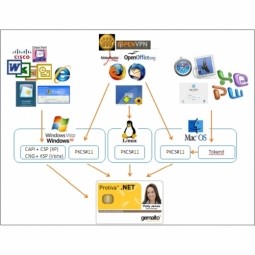Technology Category
- Drones - VTOL & VTOL Hybrid Drones
- Infrastructure as a Service (IaaS) - Hybrid Cloud
Applicable Industries
- Education
- Life Sciences
Applicable Functions
- Maintenance
- Product Research & Development
Use Cases
- Rapid Prototyping
- Virtual Prototyping & Product Testing
Services
- System Integration
- Training
About The Customer
Google is a multinational technology company specializing in Internet-related services and products. These include search engines, online advertising technologies, cloud computing, software, and hardware. The company is headquartered in Mountain View, California, and has over a million employees. Google's customers are diverse, ranging from individual users who use their search engine and other online services, to businesses that utilize their advertising technologies and cloud computing services. The company is also focused on expanding its presence in emerging markets, targeting the 'next billion users'.
The Challenge
Google, a technology giant with over a million employees, is constantly in search of new ideas, better processes, and ways to optimize. The challenge lies in operationalizing these ideas at scale, ensuring a unified customer experience across various products and platforms, and reducing design and technical debt. The company also aims to understand its customers and new markets better, particularly in emerging areas of the world. This requires executives to immerse themselves in different cultures, which is a more challenging approach than simply sending a research team. Furthermore, Google's design system, Material, is one of the most comprehensive and widely used in the world, but it needs to be effectively utilized to ensure cohesive customer experiences.
The Solution
Google has implemented several strategies to address these challenges. The company uses Design Sprints, a process pioneered by the Google Ventures team, to unite engineering, product, and design teams and arrive at refined design solutions quickly. They have also established the Google Sprint Master Academy to train UX designers to run sprints with their teams. Google's design system, Material, is used to design cohesive customer experiences across products and platforms. The company also uses a hybrid organizational model, blending multiple organizational models and running different models in parallel. This provides flexibility to tailor the organizational structure to meet the immediate needs of the teams and the organization. Google also encourages a culture of collaboration, allowing specialists in various fields to lend their expertise to projects outside their assigned ones.
Operational Impact
Quantitative Benefit

Case Study missing?
Start adding your own!
Register with your work email and create a new case study profile for your business.
Related Case Studies.

Case Study
Corporate Identity Solution Adds Convenience to Beckman Coulter
Beckman Coulter wanted to implement a single factor solution for physical and remote logical access to corporate network. Bechman Coulter's users were carrying smart card badges for doors, but also needed a one-time password token to access to our corporate network when they were not in the office. They wanted to simplify the process.

Case Study
Revolutionizing Medical Training in India: GSL Smart Lab and the LAP Mentor
The GSL SMART Lab, a collective effort of the GSL College of Medicine and the GSL College of Nursing and Health Science, was facing a challenge in providing superior training to healthcare professionals. As clinical medicine was becoming more focused on patient safety and quality of care, the need for medical simulation to bridge the educational gap between the classroom and the clinical environment was becoming increasingly apparent. Dr. Sandeep Ganni, the director of the GSL SMART Lab, envisioned a world-class surgical and medical training center where physicians and healthcare professionals could learn skills through simulation training. He was looking for different simulators for different specialties to provide both basic and advanced simulation training. For laparoscopic surgery, he was interested in a high fidelity simulator that could provide basic surgical and suturing skills training for international accreditation as well as specific hands-on training in complex laparoscopic procedures for practicing physicians in India.

Case Study
IoT platform Enables Safety Solutions for U.S. School Districts
Designed to alert drivers when schoolchildren are present, especially in low-visibility conditions, school-zone flasher signals are typically updated manually at each school. The switching is based on the school calendar and manually changed when an unexpected early dismissal occurs, as in the case of a weather-event altering the normal schedule. The process to reprogram the flashers requires a significant effort by school district personnel to implement due to the large number of warning flashers installed across an entire school district.

Case Study
Embracing Business Success in Real Time
· Increase control over growing Big Data to improve business decisions · Manage data for 28,000 biotechnology stockkeeping units in the fields of microbiology, molecular biology, animal cell cultures, plant tissue cultures, and lab ware for laboratory chemicals · Accelerate report generation and analysis with real-time data

Case Study
Implementing Robotic Surgery Training Simulator for Enhanced Surgical Proficiency
Fundacio Puigvert, a leading European medical center specializing in Urology, Nephrology, and Andrology, faced a significant challenge in training its surgical residents. The institution recognized the need for a more standardized and comprehensive training curriculum, particularly in the area of robotic surgery. The challenge was underscored by two independent studies showing that less than 5% of residents in Italian and German residency programs could perform major or complex procedures by the end of their residency. The institution sought to establish a virtual reality simulation lab that would include endourological, laparoscopic, and robotic platforms. However, they needed a simulator that could replicate both the hardware and software of the robotic Da Vinci console used in the operating room, without being connected to the actual physical console. They also required a system that could provide both basic and advanced simulation training, and a metrics system to assess the proficiency of the trainees before they performed surgical procedures in the operating theater.

Case Study
Edinburgh Napier University streamlines long-distance learning with Cisco WebEX
• Geographically dispersed campus made in-person meetings costly and inconvenient.• Distance-learning programs in Malaysia, India, and China required dependable, user-friendly online tools to maximize interaction in collaborative workspaces.• Virtual learning environment required a separate sign-in process, resulting in a significant administrative burden for IT staff and limited adoption of collaboration technology.







